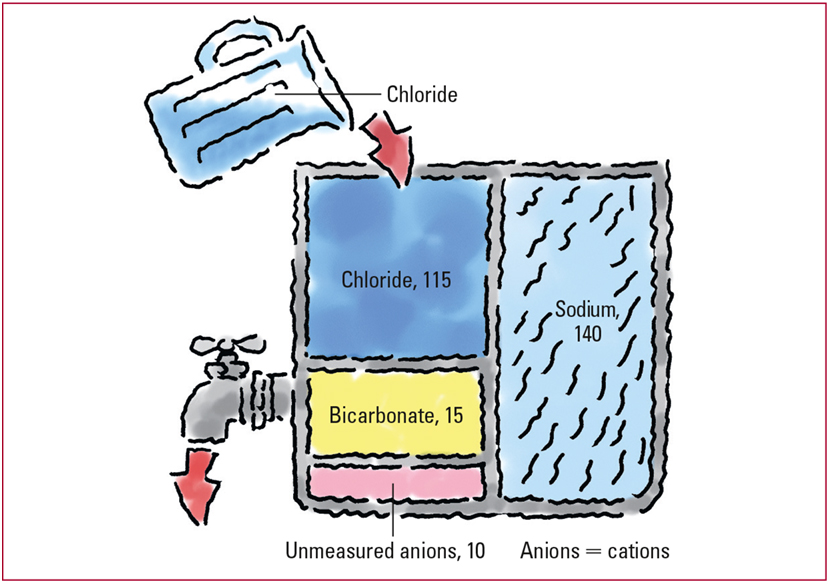Hyperchloremia increases the likelihood that a patient will develop hyperchloremic metabolic acidosis. The illustration below shows the relationship between chloride and bicarbonate in the development of that form of acidosis.
How it happens
A normal anion gap in a patient with metabolic acidosis indicates the acidosis is most likely caused by a loss of bicarbonate ions by the kidneys or GI tract. In such cases, a corresponding increase in chloride ions also occurs.
Acidosis can also result from an accumulation of chloride ions in the form of acidifying salts. A corresponding decrease in bicarbonate ions occurs at the same time. In this illustration, the chloride level is high (>108 mEq/L) and the bicarbonate level is low (<22 mEq/L).
